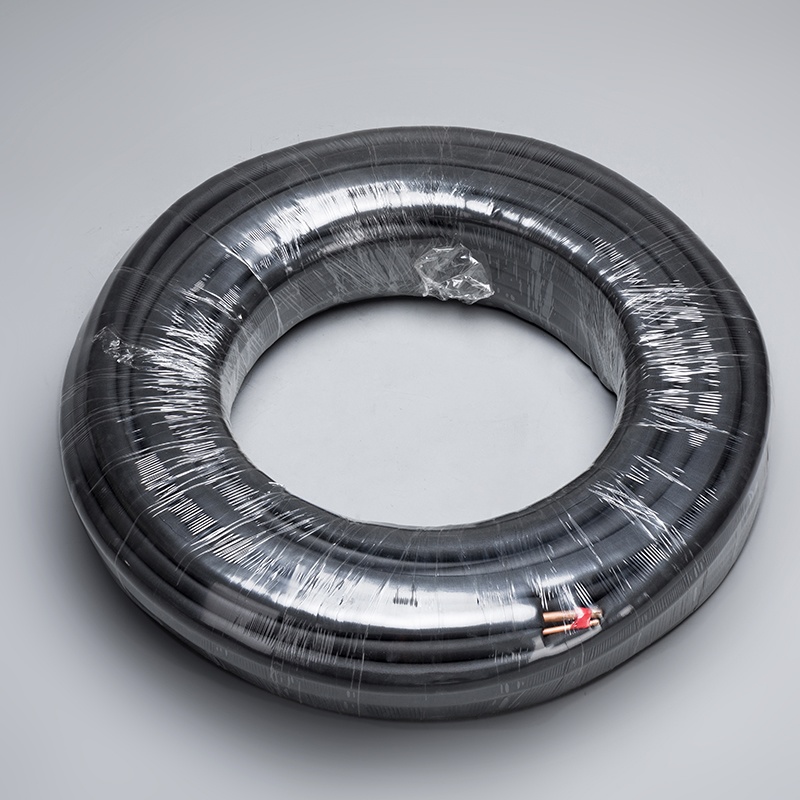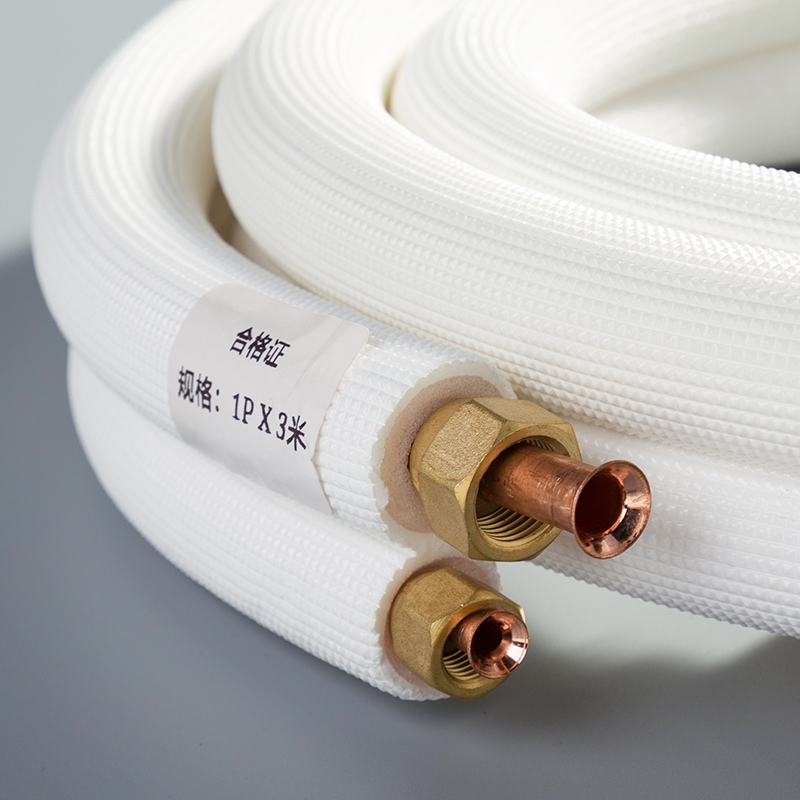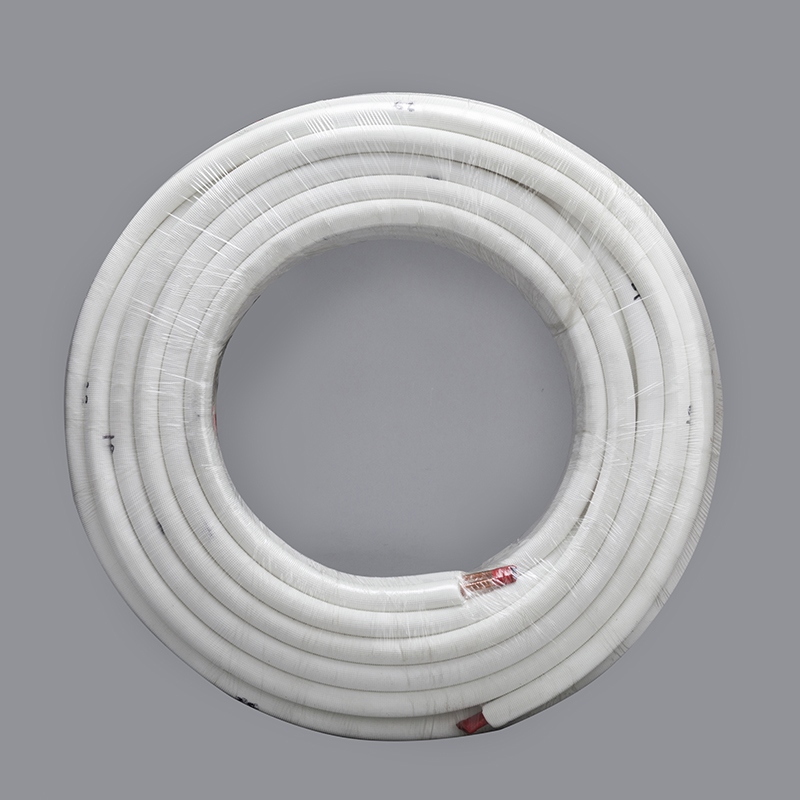Comparing Copper Pipe Types for HVAC Systems

Choosing the appropriate copper pipe type for air conditioning systems is essential for maintaining efficiency and longevity. Copper pipes are a key component in these systems, valued for their durability and resistance to corrosion. The three most common types used in HVAC are Type K, Type L, and Type M, each offering distinct characteristics. Type K pipes, with the thickest walls, are ideal for high-pressure applications. Type L pipes provide a balance of durability and flexibility with their moderately thick walls. Type M pipes, having thinner walls, are more cost-effective but less durable. Understanding these differences is crucial in determining what type of copper pipe is used for air conditioning and selecting the correct copper pipe size for air conditioner systems.
Comparing Copper Pipe Types for HVAC Systems

Type K Copper Pipes
Characteristics of Type K
Type K copper pipes possess the thickest walls among all copper pipe types. This feature provides them with exceptional durability and pressure resistance. These pipes are designed to withstand high external pressures, making them ideal for demanding environments.
Advantages of Using Type K
Durability: The thick walls ensure a long lifespan, even in harsh conditions.
Pressure Resistance: Suitable for high-pressure applications, such as underground installations.
Versatility: Used in both industrial projects and public infrastructure developments.
Disadvantages of Type K
Cost: The increased material thickness results in higher costs compared to other types.
Weight: Heavier than other copper pipes, which can complicate installation.
Best Use Cases for Type K
Underground Installations: Ideal for areas requiring high durability and pressure resistance.
Large-Scale Industrial Projects: Suitable for environments with rigorous demands.
Type L Copper Pipes
Characteristics of Type L
Type L copper pipes have moderately thick walls, offering a balance between durability and flexibility. They are commonly used in commercial and industrial settings where reliability is crucial.
Advantages of Using Type L
Balance of Strength and Flexibility: Provides durability without sacrificing ease of installation.
Versatile Applications: Suitable for both indoor plumbing and HVAC systems.
Cost-Effective: Offers a good compromise between cost and performance.
Disadvantages of Type L
Moderate Pressure Resistance: Not as robust as Type K for extremely high-pressure applications.
Limited Use in Extreme Conditions: May not be suitable for the most demanding environments.
Best Use Cases for Type L
Commercial and Industrial HVAC Systems: Ideal for environments with moderate pressure requirements.
Fire Safety Systems: Commonly used due to their reliable performance.
Type M Copper Pipes
Characteristics of Type M
Type M copper pipes feature thinner walls, making them more cost-effective and easier to handle. They are widely used in residential applications due to their affordability.
Advantages of Using Type M
Affordability: Lower cost makes them attractive for budget-conscious projects.
Ease of Handling: Lightweight and flexible, simplifying installation.
Residential Suitability: Perfect for low-pressure residential systems.
Disadvantages of Type M
Lower Durability: Thinner walls mean less resistance to pressure and potential damage.
Limited Industrial Use: Not suitable for high-pressure or industrial applications.
Best Use Cases for Type M
Residential Plumbing: Ideal for homes where cost and ease of installation are priorities.
Low-Pressure Systems: Suitable for applications with minimal pressure requirements.
Factors to Consider When Choosing Copper Pipes
Selecting the right copper pipe for HVAC systems involves evaluating several critical factors. Each type of copper pipe—Type K, Type L, and Type M—offers unique characteristics that suit different applications. Understanding these factors ensures the optimal performance and longevity of the HVAC system.
Pressure Requirements
Pressure requirements play a pivotal role in determining the appropriate copper pipe type. Type K copper pipes, with their thickest walls, provide the highest durability and pressure resistance. They are ideal for high-pressure applications, such as underground installations. Type L pipes, with moderately thick walls, offer a balance suitable for general plumbing tasks and commercial HVAC systems. Type M pipes, having thinner walls, are best suited for low-pressure residential systems. Evaluating the pressure demands of the HVAC system helps in selecting the most suitable pipe type.
Installation Environment
The installation environment significantly influences the choice of copper pipe. Type K pipes excel in harsh environments due to their robust construction, making them perfect for underground or industrial settings. Type L pipes, known for their versatility, adapt well to both indoor and outdoor installations, providing reliable performance in various conditions. Type M pipes, being more affordable and easier to handle, are often preferred for residential applications where environmental conditions are less demanding. Assessing the installation environment ensures the selected pipe can withstand the specific conditions it will face.
Budget Considerations
Budget considerations often dictate the choice of copper pipe. Type M pipes, with their thinner walls, offer a cost-effective solution for budget-conscious projects, particularly in residential settings. Type L pipes provide a middle ground, balancing cost with performance, making them suitable for both residential and commercial applications. Type K pipes, while more expensive due to their thicker walls, offer unmatched durability and pressure resistance, justifying their cost in high-demand environments. Weighing the budget against the performance requirements helps in making an informed decision.
By carefully considering these factors—pressure requirements, installation environment, and budget—one can select the most appropriate copper pipe type for their HVAC system, ensuring efficiency and reliability.
Ease of Installation
Ease of installation plays a crucial role when selecting copper pipes for HVAC systems. Each type of copper pipe—Type K, Type L, and Type M—offers distinct characteristics that impact the installation process.
Type K Copper Pipes: These pipes have the thickest walls, providing exceptional durability and pressure resistance. However, their weight can complicate installation. Installers often find them challenging to maneuver, especially in tight spaces or elevated areas. Despite these challenges, Type K pipes remain a preferred choice for underground installations due to their robustness.
Type L Copper Pipes: With moderately thick walls, Type L pipes strike a balance between durability and flexibility. Installers appreciate their versatility, as they adapt well to various environments. These pipes offer a manageable weight, making them easier to handle during installation. Their adaptability makes them suitable for both indoor and outdoor applications, enhancing their appeal in commercial and industrial settings.
Type M Copper Pipes: Known for their thinner walls, Type M pipes are lightweight and flexible. Installers find them the easiest to handle, especially in residential settings. Their affordability and ease of installation make them an attractive option for budget-conscious projects. However, their lower durability limits their use to low-pressure systems.
What Type of Copper Pipe is Used for Air Conditioning

Selecting the right copper pipe for air conditioning systems is crucial for ensuring optimal performance and longevity. The choice often depends on the specific requirements of the HVAC system, including pressure levels and installation environment. Among the various types of copper pipes, Type L is commonly used in air conditioning applications due to its balance of durability and flexibility. This type of pipe is well-suited for both residential and commercial HVAC systems, providing reliable performance under moderate pressure conditions.
Copper Pipe Size for Air Conditioner
Determining the appropriate copper pipe size for air conditioner systems is essential for efficient operation. The size of the copper pipe directly affects the system's ability to transport refrigerant effectively. Common sizes for air conditioning applications include 1/4 inch, 3/8 inch, and 1/2 inch. These sizes are selected based on the specific cooling capacity and design of the air conditioning unit. Proper sizing ensures that the system operates efficiently, minimizing energy consumption and maximizing cooling performance.
What Type of Copper Pipe is Used for Air Conditioning
In air conditioning systems, the type of copper pipe used plays a significant role in the system's overall efficiency and reliability. Type L copper pipes are often preferred for air conditioning applications. They offer a good balance between strength and flexibility, making them suitable for both indoor and outdoor installations. The moderately thick walls of Type L pipes provide adequate pressure resistance, ensuring the system can handle the demands of air conditioning operations. Additionally, the flexibility of copper pipes allows for easy installation, even in complex layouts, without compromising the integrity of the pipe.
"Copper pipes are very flexible during installation due to their formability. A quick change of bends as well as length can be easily done on site, given the right tools and methods."
This flexibility is particularly beneficial in air conditioning systems, where intricate routing may be required. The ability to bend and shape the pipes without weakening them ensures that the installation process is smooth and efficient. Moreover, the cost-effectiveness of Type L pipes makes them an attractive option for both contractors and homeowners looking to optimize their air conditioning systems.
Copper pipes play a pivotal role in HVAC systems, each type offering unique benefits. Type K pipes, with their thick walls, excel in high-pressure environments. Type L pipes balance durability and flexibility, making them versatile for various applications. Type M pipes, with thinner walls, suit low-pressure residential systems. When selecting the right pipe, consider specific HVAC needs such as pressure requirements and installation environment. As HVAC Expert notes, "Copper pipes enhance the efficiency of air conditioning systems." By evaluating these factors, readers can make informed decisions for optimal system performance.
See Also
The Benefits of Selecting Copper Pipes for AC Systems
Transforming Air Conditioning with High-Quality Copper Pipes
The Importance of Pure Copper Pipes in AC Efficiency


